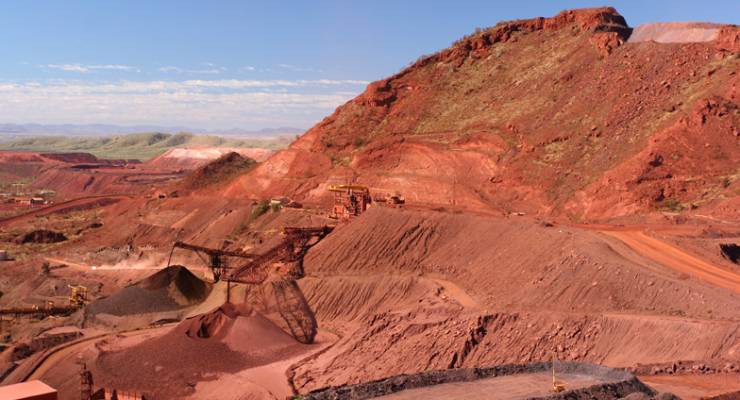
Iron ore punters. Iron ore bulls and others in the federal government and Treasury (hint, Scott Morrison) should not put their faith in the durability of the current boom in iron ore prices. As we pointed out on Friday, it is built on the shifting sands of Chinese punters and over US$1 trillion of cash pumped into the economy in recent months. In fact, it looks like a replay of the boom we saw this time last year in the Chinese sharemarket, which ended in tears, losses and legal action. So Canberra and any other enthusiast should yesterday’s warnings from Bloomberg, Fitch Ratings and Morgan Stanley about the surge in Chinese commodity prices, especially iron ore, and moves by Chinese exchanges to try to cool the frenzied trading and outright speculation. Morgan Stanley said in a note yesterday: “Now China’s speculators engage commodities … China’s latest speculative spike has stunned global markets.” Bloomberg likened the activity to what happened in the Chinese sharemarket last May-August when a speculative surge created a bubble, and then a bust, as the government struggled to contain and control the situation. And US ratings group Fitch warned the boom in Chinese steel prices wasn’t sustainable. The firm said in a note yesterday that the gains in steel prices have been driven by a seasonal recovery in activity that’s been exacerbated by increased speculation in the futures market. — Glenn Dyer
Day in court. It’s not long to go until the “tough cop on the beat”, to quote Messrs Turnbull and Morrison, faces up to its moment of truth: the insider trading trial in Sydney of former banker and socialite funds manager Oliver Curtis. The case starts in the NSW Supreme Court in Sydney on May 11 and should be a beauty. In fact it will be one of the biggest court cases of the year in Old Sydney Town, as Curtis goes on trial nine years after he was accused of insider trading offences with childhood friend John Hartman, who has already been convicted and done his time. — Glenn Dyer
How many central bank updates are too many? There has to be a collective noun for a group of central banks meeting/releasing statements or figures, or having executives make speeches all within a period of around 24 hours. A cabal of bankers is too obvious and a murder of bankers too bird like, a whisper of bankers is close, but not quite there. A clutter, or a choir? So what are we talking about? Well, this Thursday and Friday our time we will get statements, speeches or figures from the following central banks: the US Federal Reserve, the Bank of Japan, the Reserve Bank of NZ, the Banco de Brasil and the Reserve Bank of Australia.
The Fed kicks off proceedings early Thursday morning (around 4.15am) with its interest rate decision (no move) and a statement that might clear up the fog around the Fed’s intentions. But then again, it might not. Then the RBNZ releases its latest monetary policy decision around 7am. Thursday afternoon, it’s the turn of the Bank of Japan to say something on monetary policy and there’s a tip it will do something to lessen the damage to banks by its partial negative interest rate policy, and perhaps try and drive the yen lower through a bit of jawboning (or even some intervention). A few hours later the central bank of Brazil releases its latest interest rate policy (it is one of the few institutions that has retained its credibility in the country as the economy has slid into deep recession and political corruption scandals have shattered the government and triggered impeachment moves against President Dilma Rousseff). The RBA releases its monthly lending day late Friday morning, and Assistant governor, Guy Debelle speaks in Jakarta that day as well. And finally, the Bank of Russia releases its interest rate decision late Friday night (our time). But wait, there’s more data: GDP for the March quarter for the US and UK on Thursday night (our time), and consumer price inflation for Australia tomorrow. — Glenn Dyer







I was taught that the collective noun for a group of bankers is a “wunch”
Instead of making prejudiced criticisms of (for example) banking mates, for once why not present cohesive suggestions of ways to tackle problems?
Assuming as always that the Commissariat Censor gives his blessing.
Why not just call it as it is: a conspiracy of bankers
A scam of bankers?
I’ll stick with Adam Smith’s axiom £when men of a simlar trade meet, even socially, it inevitably results in a cartel against the customer.”
So “a collusion of banksters” or the simple “cartel of shysters”?
A “murder” has already been take – on behalf of crows, unkindly in my view.